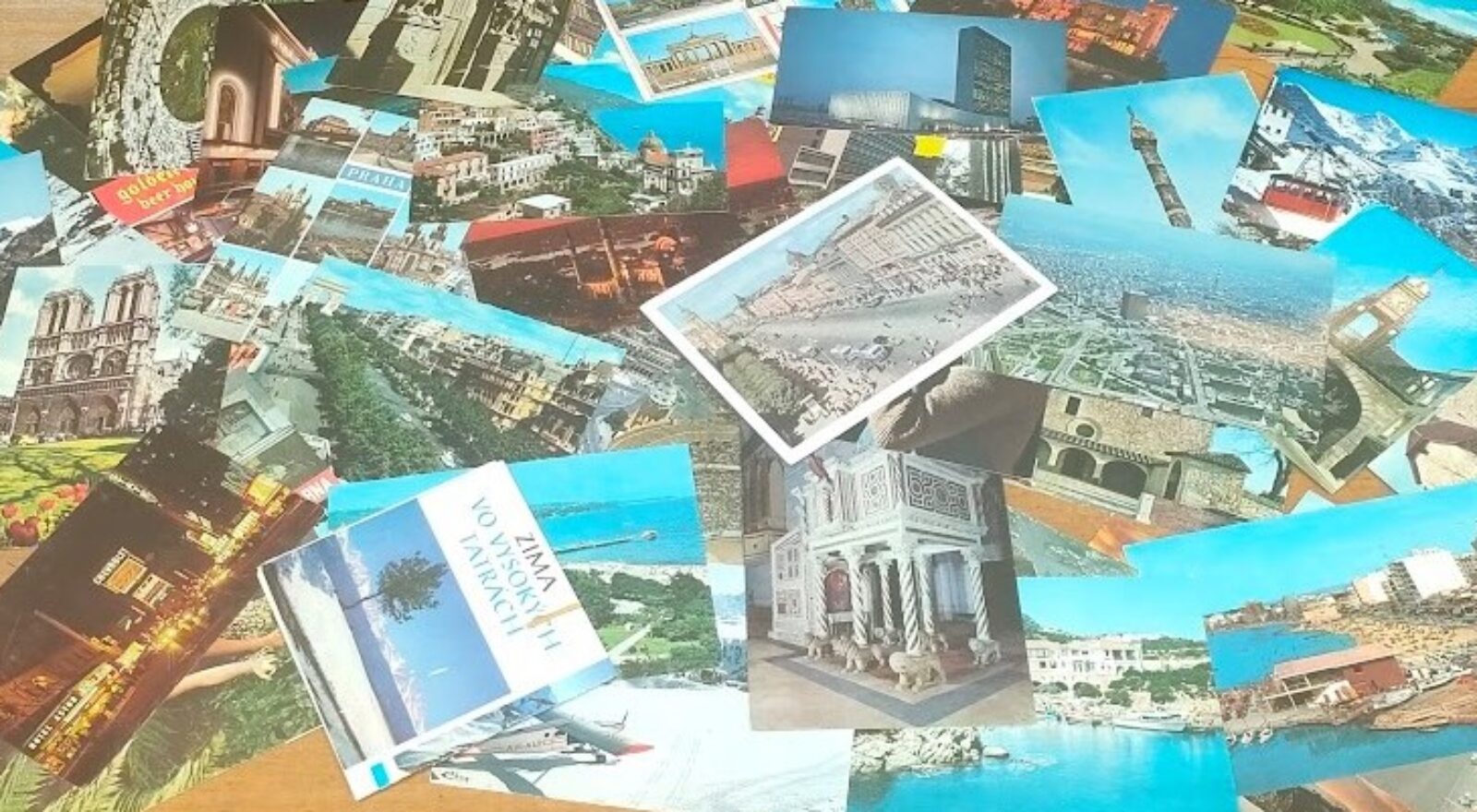
Holiday time
Kessler's correspondence consists not only of long letters about politics, but also of greeting cards, telegrams and postcards
I do most of my research in archives. Kessler’s papers stored in the Provincial Archives of Trento are many, divided into various envelopes, 2254 to be precise. Some of them gather together greeting, congratulation or thank-you cards from famous politicians (Giulio Andreotti, for instance) and from common people, especially from his beloved Val di Sole. But when you research about people still so alive in the memory of many, it happens to run into sources maybe not of the utmost importance but which give you a hint of how that person must have been. This is exactly what happened with a thick envelope containing postcards addressed to Kessler which landed on my desk. They are postcards of all sorts.
They come from all over the world: from Mandrone “Città di Trento” lodge and also from Rotorua, in New Zealand (a very beautiful place, let me say), from New York and Moscow, Istanbul and Beijing. As a consequence, also the stamps on them are very interesting. Some have politicians’ images upon: Ataturk, John Fitzgerald Kennedy, the military general Franco, Lenin – the latter accompanied by the commemorative stamp of Jurij Gagarin’s undertake in 1961. From Ecuador and New Zealand come instead some stamps representing Christian images: the Virgin’s presentation, an image of Christ on the cross and an Annunciation, arrived for 1971 Christmas. A Virgin Mary with baby is also represented in the copy of a painting by Filippo Lippi on a 1970 stamp. There are then stamps celebrating events such as the world kayak championship (slalom and downhill) held in Meran in 1971 and the Universiadi in Turin in 1970. Animals are not missing, such as a schnauzer on a Polish stamp, some huge bustards from Hungary or a red partridge from Spain.
Almost all of them are addressed to Bruno Kessler “President of the Provincial Council” or “President of the Province”, “Province”, “Province building” and without any address. The postman clearly knew where to find him.
Most of the senders wish to greet him cordially or faithfully, except Guido Lorenzi, who in 1970 wrote from Varna, in Bulgaria, greeting him with “sociological cordiality”, as of a good culture councillor of the Kessler council. Other postcards mention old memories or wish for future visits: «See you in Africa», someone writes from Mileto, which is actually in Turkey though.
There is a great variety of pictures: from lodges covered with snow to sunny beaches, but there are also some peculiar ones, such as the picture of a Lufthansa airplane or that of an emeritus mountain guide, who is the author himself of the thank-you postcard. There is also the postcard of the Golden Lion Beer House in Rome: «Typical Scottish restaurant» in EUR. «Famous spit-roasted and culinary specialities, Moretti tap beer, diner, deli». Even more interesting is reading that it was his «friends» who sent it, «sure to be doing something you will appreciate»: Pierluigi Angeli, Enrica Perazzolli, Claudia Piccoli, Flaminio Piccoli, Remo Segnana and more. They are famous members of Trentino Democrazia Cristiana, not necessarily belonging to the coalition closest to Kessler.
Also the correspondents are of various kind: they are politicians, as previously said, but also journalists as Aldo Gorfer, who writes together with his wife from Mikulov, on the border between Austria and the old Cecoslovacchia. A postcard with the picture of a Spanish arena crammed with people for the corrida was sent by the «graduated students and chaperons» probably of Istituto agrario di San Michele – as Kessler wrote with a pencil. He had been president of the institution, now called Fondazione Edmund Mach, from 1957. As a matter of fact, Kessler wasn’t always aware of the identity of the senders: the signature of a postcard from Pont Valsavacche (in Valle d’Aosta), for instance, was underlined in red and he wrote beside “Who is this?”; luckily, probably thanks to his well-supplied secretariat team of the council, senders could be identified, as prove the notes and addresses scribbled on the margins of the postcard.
Mountains are a recurring subject, being one of the great passions of Kessler. So, for example, with a picture of the Tatra mountain peaks covered with snow (on the Carpazi, on the border between Poland and Slovakia) someone wrote: «Deers are “spasmodically” waiting for you to come», as hunting was another one of the favourite activities of Kessler. In 1971 instead, from Courchevel (France) someone promises a «complete documentation» on mountain aviation, which over there was already «something real and great».
This small collection of 63 postcards is not going to be of massive importance for my research on Kessler. However, it still shows some features of himself and of his social network, and also of the environment he lived in: how he cared to identify the senders to answer them, the straightforward and friendly contacts with some famous people of Trentino at that time, such as Gorfer and other ones. They are details helping to bring into focus a personality which may not be detected in official letters.




